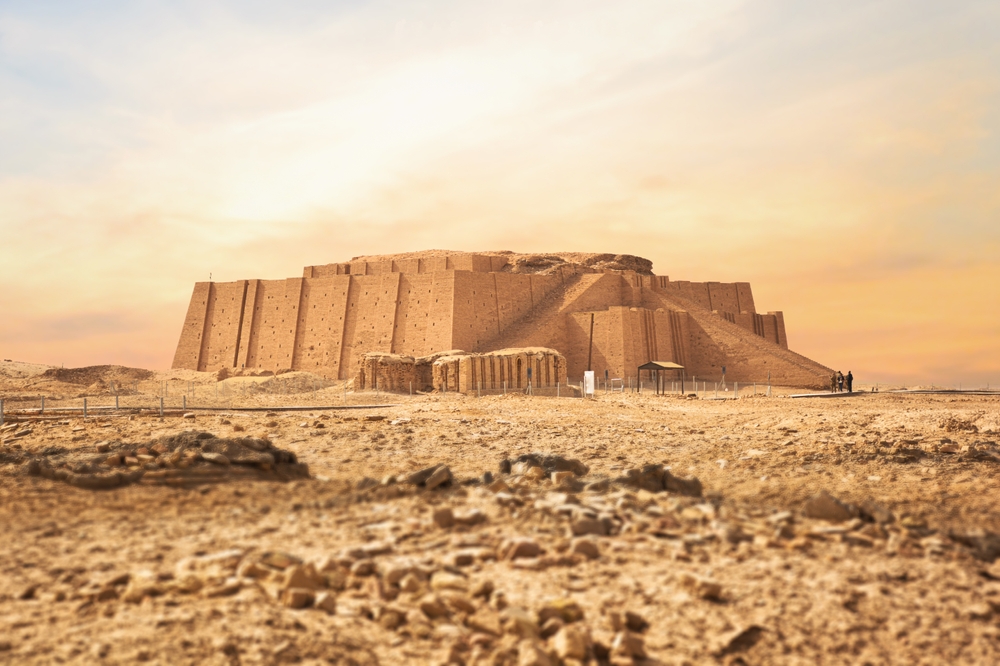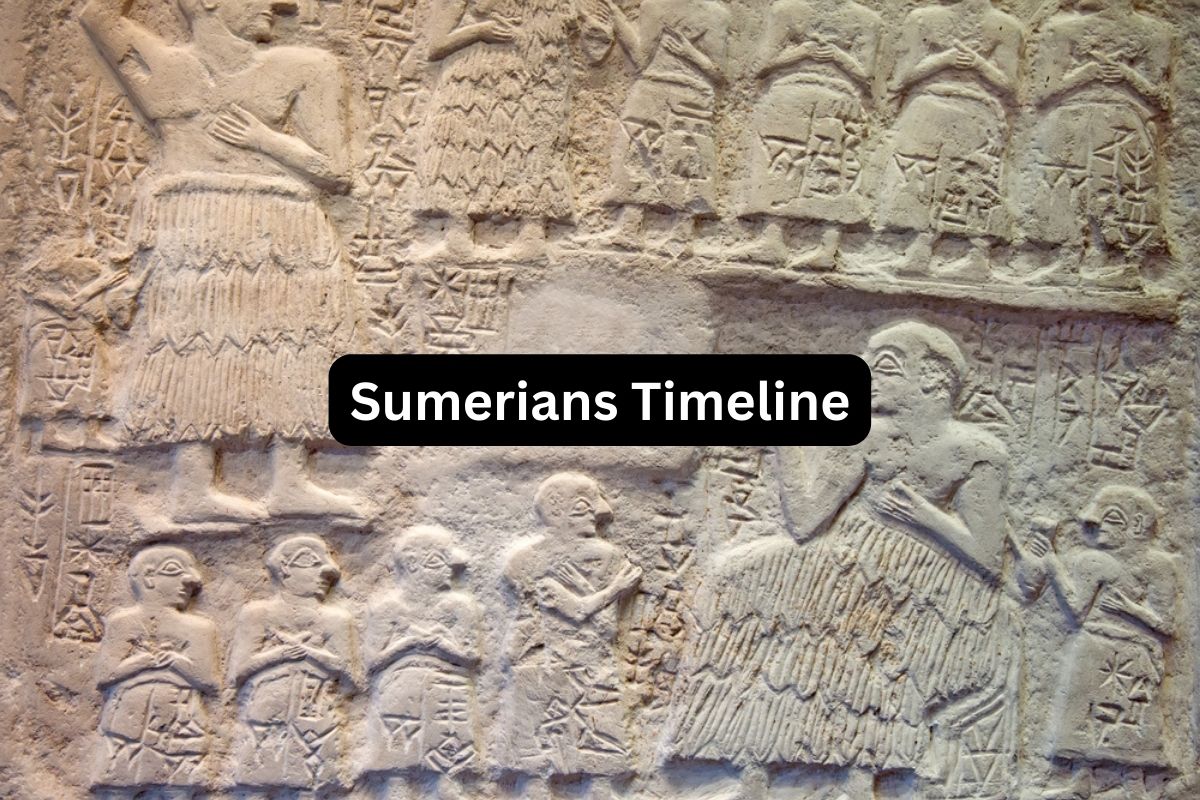The Sumerians were a people who lived in the southern part of ancient Mesopotamia, an area that corresponds to modern-day southern Iraq.
Emerging around 4500 BC, they are often credited with many ‘firsts’ in human history, including the invention of the wheel, the development of cuneiform script (one of the earliest forms of writing), the creation of the first city-states, and the establishment of some of the earliest known laws and forms of government.
Over time, the Sumerians developed a complex civilization with sophisticated religious, social, economic, and political structures.
The Sumerian city-states, each with its own ruler, frequently competed with each other for resources and power, which eventually led to the establishment of the first known empire, the Akkadian Empire, in the late third millennium BC.
Also Read: Sumerians Accomplishments
Even after their political power waned, the influence of the Sumerians continued to be felt in the region due to their significant cultural and technological contributions.
Their legacy, including inventions, legal traditions, literature, and more, has had a lasting impact on subsequent cultures and civilizations, and our understanding of human history.
| Time Period | Events |
|---|---|
| 4500-4000 BC | Ubaid Period: Pre-Sumerian Ubaidians establish settlements, start of agriculture, pottery, and some forms of social organization. |
| 4000-3000 BC | Uruk Period: Emergence of urban life with Uruk becoming a major center, development of the cuneiform script and the wheel, and the beginning of the Bronze Age. |
| 3000-2350 BC | Early Dynastic Period: First historically attested Sumerian rulers reigned. Major conflicts arise as city-states battled for control over resources and territory. Major cities included Ur, Kish, Uruk, and Lagash. |
| 2350-2150 BC | Akkadian Empire Period: Sumer is conquered by Sargon of Akkad. Sumerian language continues to be used for religious and cultural purposes, while Akkadian becomes the language of administration. |
| 2112-2004 BC | Third Dynasty of Ur/Neo-Sumerian Empire: Sumerians reestablish control over Mesopotamia after the collapse of the Akkadian Empire. The city of Ur becomes a significant center of power. |
| 2004-1595 BC | Old Babylonian Period: Amorites start to dominate the region. Babylon, under the rule of Hammurabi, establishes the Old Babylonian Empire. |
| Post 1500 BC | Decline and Legacy: Sumerian influence continues to wane as the region comes under the control of various empires. The Sumerian language gradually dies out. |
Timeline of the Sumerians
4500-4000 BC: Ubaid Period
The Ubaid period saw the establishment of the first permanent agricultural settlements in Sumer, which were created by the Ubaidian people, a pre-Sumerian culture.
These communities developed an early system of irrigation for farming, and there was a growth in the complexity of social organization, reflected in the construction of larger dwellings and public buildings.
Also Read: Sumerians Facts
Pottery became widespread, with the Ubaidians producing some of the earliest known examples. The Ubaid period set the stage for the urban civilization that would follow.

4000-3000 BC: Uruk Period
Named after the ancient city of Uruk, this period saw the emergence of some of the first urban centers. Uruk, believed to have been the world’s largest city at the time, was a major center of culture and commerce.
The period saw significant technological and social developments. One of the most important was the invention of writing.
The earliest form of writing, cuneiform, began as a series of pictographs and evolved over time into a system of wedge-shaped marks made on clay tablets. The wheel was also invented during this period, significantly advancing transportation and trade.
During the Uruk period, the city-state model of organization emerged, with each city and its surrounding territory forming an independent political entity.
3000-2350 BC: Early Dynastic Period
This period marked the beginning of recorded history in Sumer. The region was divided into several independent city-states, each ruled by a king or a governor. The major city-states included Eridu, Uruk, Ur, Kish, and Lagash, among others.
As these city-states grew, they began to compete with each other for resources and territory, leading to conflicts and wars. The concept of “divine kingship” took hold, with rulers often claiming divine authority.
Monumental architecture, including ziggurats, palaces, and temples, were constructed during this period, and writing became more widespread and sophisticated. This period was a time of cultural and political growth and set the foundation for the later Akkadian Empire.
2350-2150 BC: Akkadian Empire Period
The Akkadian Empire period began when Sargon of Akkad, a Semitic-speaking ruler, conquered Sumer and established the world’s first empire.
The Akkadian Empire unified the city-states of Sumer along with northern regions in Mesopotamia, creating a blend of cultures and peoples.
Although Akkadian became the language of administration, the Sumerian language continued to be used in a religious and cultural context, and Sumerian scribes were highly prized for their knowledge.
Sargon and his successors implemented many administrative innovations, including the division of the empire into provinces ruled by governors. The Akkadian Empire, however, was not without its difficulties, including rebellions and invasions from neighboring peoples, and it ultimately collapsed around 2150 BC.
2112-2004 BC: Third Dynasty of Ur / Neo-Sumerian Empire
Following the fall of the Akkadian Empire, there was a brief period of chaos and instability. However, around 2112 BC, a ruler named Ur-Nammu came to power in the city of Ur and established the Third Dynasty of Ur, also known as the Neo-Sumerian Empire.
Ur-Nammu and his successors expanded their control over most of southern Mesopotamia, creating a period of political stability and economic prosperity. Ur-Nammu is known for implementing one of the earliest known law codes (pre-dating Hammurabi’s famous code).
This period saw a brief Sumerian renaissance, where Sumerian art, literature, and architecture flourished. The most notable architectural feat of this period was the construction of ziggurats, terraced step pyramids that were part of temple complexes.
This period, however, was short-lived and ended around 2004 BC, as the empire fell due to a combination of internal strife, economic issues, and foreign invasions.
2004-1595 BC: Old Babylonian Period
Following the fall of the Third Dynasty of Ur, Mesopotamia entered into a period of turmoil marked by the invasion of the Amorites, a Semitic people from western Syria.
The Amorites gradually gained control over most of Mesopotamia and established numerous city-states, the most prominent of which was Babylon.
Under the rule of Hammurabi, one of the best-known kings of this period, Babylon grew in power and importance and established the Old Babylonian Empire. Hammurabi is particularly famous for his law code, known as the Code of Hammurabi, one of the oldest deciphered writings of significant length in the world.
Despite the dominance of Amorite and later Babylonian culture, Sumerian cultural and religious traditions continued to exert influence.
Post 1500 BC: Decline and Legacy
After the fall of the Old Babylonian Empire, the region of Mesopotamia experienced numerous invasions and fell under the rule of various foreign powers, including the Hittites, Kassites, Assyrians, and Persians.
During this time, the use of the Sumerian language gradually declined and eventually became extinct as a spoken language. However, it continued to be used in religious and scholarly contexts for many centuries. Despite their decline, the Sumerians left a significant legacy.
They are credited with many inventions and innovations, such as the earliest form of writing (cuneiform), complex legal codes, large-scale architectural projects, and advances in mathematics and astronomy. These achievements of the Sumerians had a profound influence on the later cultures of the region and laid the foundation for the development of civilization in the Near East and beyond.
